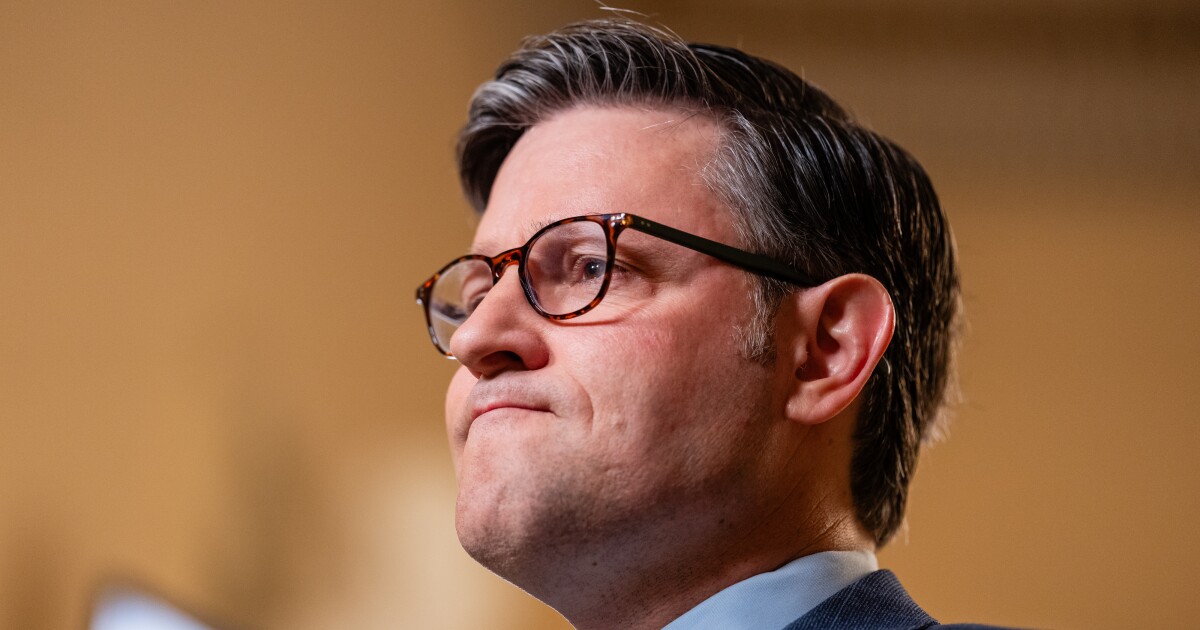Accounting
Tech integration after a merger both an art and science says firm leaders.
Published
9 months agoon

The process of merging one accounting practice into another, larger firm will always raise questions, not the least of which is how, and to what degree, they will integrate their technology. This, in turn, raises a host of other questions for both acquirer and acquiree — and no matter how they decide to answer these questions, though, working through them is always a process.
Firms with significant experience in M&A will point to a range of issues that need to be addressed during integration, but the most common are these:
- Data management;
- Cybersecurity;
- IT culture; and,
- Timing and cost.
Data conversions a challenge
One of the biggest challenges is data management, something that often comes up in the acquisition process. Scott MacChesney, vice president of integration for Top 25 Firm Citrin Cooperman, said it’s important to extract client data to ensure a smooth transition.
“The firms we bring in tend to have inconsistent client data systems or no [client relations manager] at all, or the way they manage client data is partially manual and partially through email,” he said, adding that this is so important because “that is one of the key things to make sure we can still service clients well on Day 1 and employees can still understand and see reports on their clients on Day 1,” he said.

tanoy1412 – stock.adobe.com
Beyond just extracting the data itself is converting it to the firm’s standards, which V. Allen Smith — chief information officer for Top 10 Firm Baker Tilly— said goes past just file formats and into basic definitions, which he said are not as simple as they seem.
“How do you define a client? How do you define a project? How do you define an engagement? … If you’re serving a multinational [for instance], is each legal entity a client, or do you have a parent-child client relationship? What systems generate the unique client ID? Is it your audit system, your assurance system, your tax system, your practice management system? It’s all about coming up with those definitions. Based on that, the 0s and 1s take care of themselves,” he said.
Firms handle this through both automated and manual processes. Mike Giuli, chief information officer at Top 25 Firm Cherry Bekaert, said their firm uses spreadsheet-based templates for determining key pieces of information that they send to the other firm to fill out. While these have been used effectively for years, he noted that there is a certain granularity that can be lost in the process, which is why they are also developing what he called an “ingestion engine” that can take in raw data for processing.
“So now what we’re doing is we’re building [in] our data lake a landing pad so we can bring in the raw data and do the transformation on our side versus through spreadsheets. … Over the last year we’ve identified the need for this and so we’re trying to create an easier automated and repeatable way that will maximize the time and productivity [improvements] for the firm,” he said.
John Roman, chief information officer of Top 50 Firm The Bonadio Group, said his firm employs a combination of both manual and automated processes to input and process the necessary data. He noted that it’s important that everyone be on the same systems, whether that’s practice management systems, tax prep systems, or even email systems. “Massaging” all this data to fit with their own platforms tends to be a time-consuming task.
“We use a combination of internal resources as well as our software providers that we use to help us. A good majority of the times we are using specific software scripts that take the data and format it in a way that can get into our systems. That is the automated part. The manual part, though, is someone still needs to validate the data [to check if it was] converted correctly,” he said.
Roman noted, though, that much of this process begins with a questionnaire that helps them understand what data even needs to be migrated in the first place. And sometimes firms tell them they only need the old data for historical purposes and that they’ll enter data into Bonadio’s systems from that day on.
Cybersecurity and governance
Cybersecurity is another major part of the mergers and acquisitions process. Different firms can have different levels of risk tolerance, which informs their individual policies and programs. But while the particulars may vary, acquiring firms generally expect the merged-in firm to adhere to their own cybersecurity standards and procedures.
“On Day 1, everyone adheres to our information security policies and procedures. We have certain standards in place that protect both client and employee data and before we bring data in from our merged-in firms, we make sure it is fully scanned and malware free. And we have certain technology controls in place that the merged-in firm would need to follow,” said Roman from Bonadio. “It is never, ‘Well, you can keep doing your own thing from an infosec perspective’ — they have to use our procedure and technical controls.”

GG Kenji – stock.adobe.com
MacChesney from Citrin Cooperman said they assess cybersecurity risks for incoming firms the same way they assess it for new clients, noting, “We don’t cut corners, we really implement the playbook.” While he suggested that cybersecurity alignment is more of an ongoing conversation, there is still the general expectation that the incoming firm will adhere to certain expectations and policies.
“The changes are more about communicating to the income firm what the expectations in our environment are, and what the needs of our firm are, to be comfortable with the transaction. That is what it really comes down to, [cutting down on] surprises after we close. We communicate as early and as often as possible,” he said.
Similarly, while Baker Tilly’s Smith said it’s more about having a conversation to see where the firms align on risk tolerance, ultimately there is expected to be an alignment within the combined firm, as it does no good to have everyone on different systems.
“We’ll take this combination as an opportunity to address those kinds of areas where you might be misaligned, like how you use multifactor authentication. To the degree where the smaller firm is maturity-wise … These combinations are a great opportunity to get into alignment and — again, it’s not on our firm or their firm but the new firm, the combined firm — once you get that, we’ve all agreed this is what we’ll be doing, now the discussion can be when do we do it? Do we do it on Day 1? Is that something we’ll do on Day 180? I would say some are Day 1 and some don’t have to be,” he said.
This goes beyond just what tools are used, however. Cherry Bekaert’s Giuli said that while many things are negotiable with the new firm, compliance and data management standards are “one of the non-negotiables.” For instance, he said new firms need to adhere to Cherry Bekaert’s own data retention policies. Some firms, he said, don’t have one at all, and might have emails going back 20 years (versus the one year his firm requires).
“So it really becomes a change management exercise and this is one of the things where we put a lens on what people will need to do differently tomorrow versus today. As you look at acquisitions, every one of them is different, so [it’s important] to understand what our rules and our policies are going in and saying, ‘Here is what you need to adhere to’ and understand where we are today and how we help them move to make sure they’re complying with our policies,” he said, adding at a different point that this also includes security policies like ensuring everything is firewalled.
IT cultures
Another technology challenge in the merger process has nothing to do with the technology itself but, rather, the culture behind it. Different firms have different cultures overall, and this includes their IT culture as well. Some firms have one big, centralized team while others have several smaller specialized ones; some firms cloister their IT people from the other professionals while others embed them directly into teams; some are thought of as mainly troubleshooters and support, while others take a more strategic role.
Managing this issue is mainly an exercise in diplomacy, in particular being open and transparent and not demanding everything change immediately. Bonadio Group’s Roman said everyone always has lots of questions when they’re merged in, and that includes the IT team. Taking care to answer these questions and being open about what those answers mean can go a long way in reducing the anxiety and stress that might come with an acquisition.

freshidea – stock.adobe.com
“Human nature is people have questions: How will this affect me, how will I support my users, how do I fit into this new group? So we spend a lot of time pre-merger working with them to integrate them with our own IT team. … so they feel part of the team,” he said.
Another common point was how important it is to recognize what makes a particular team unique and to not bulldoze over that in the quest to assimilate their culture. Smith, from Baker Tilly, notes that each firm is “unique and special” and stressed he does not mean this in a feel-good personal sense but in a pragmatic one.
“Every organization we have ever combined with, their IT team did something better than our IT team, regardless of size. So how can we bring that learning into this new combined organization and have that be in the culture?” he said, noting that this makes it difficult to talk about a unitary IT culture, as it changes with every firm they merge in.
While Giuli, from Cherry Bekaert, put a little more emphasis on his firm’s own culture, like Smith he noted that every acquisition brings new skills and competencies into the firm, and IT is no exception. Recognizing that and working it into their own procedures is what helps bring teams together.
“You’ve got to understand the talents firms have and how they all fit together. You also need to know it’s sometimes an evolution — you can’t assume everything will work smooth on Day 1. You try your best, you constantly figure out ways of working in the culture to bring the teams together. You may get talent you didn’t have before, so it may result in the creation of new capacities you didn’t have before, by virtue of the people in play,” he said.
MacChesney from Citrin Cooperman, described a similar approach and emphasized that it’s important to communicate that you’re there to amplify what already makes them special, not squash it beneath your feet. He said there’s a general acceptance of a firm’s “quirks” and his firm tries to maintain that even as they’re merged in. He said they don’t want them to lose whatever ethos or culture made them an attractive buy in the first place.
“It’s my job to make sure that their voices are heard, that those cultural nuances are identified, and that when we do implement change, we explain the why behind stuff, and that we also understand it’s a two-way street with the why. I need to understand why they do something and they need to understand why we might want it to change, and that is how you build that understanding. So we can definitely migrate or bring on a firm and fully integrate it into our firm, and then still have their own unique way of doing things or their own unique kind of subgroup cultures,” he said.
Timing and cost
While declining to share specific total figures, the firms we spoke to generally agreed that aligning with a merged-in firm on a technology level is not free. Beyond the technical and cultural considerations are also serious material expenses.
MacChesney from Citrin Cooperman said, in fact, that is probably the most expensive aspect of the process, as it involves bringing in new devices, which in turn necessitates adding layers of infrastructure and security. He added that, depending on the systems they want to integrate into their main tech stack, there may even be a need for software developers to craft their own custom application programming interfaces, which could take additional time and money. One of the main ways they control these expenses is by handling things through an in-house dedicated team versus hiring consultants or outsourced talent.
“We know what our infrastructure can do and are fully tied into our IT environment as subject matter experts. That, to me, is the biggest driver in cost reduction on the tech side. These people are professionals, they know the questions to ask and the things to look for, and I’m not saying we’re perfect, but they at least know the scary things to look out for on the highway,” he said. When asked for an example of a “scary thing,” he mentioned disaster recovery, saying that many smaller firms do not have “the capital or robust IT environment” to support it, and so the team makes sure to put that in place if it’s missing.
He also noted that tech expenses aren’t “taking our breath away or making us shy away from the transactions we’ve done,” noting that if it the costs were very significant, the firm likely would not have done 20-plus deals over the years.
As far as how long it takes, he said 90-100 days “is probably par for the course.”
Bonadio Group’s Roman said that at his own firm most of the cost is additional licenses. For instance, after merging in a smaller firm, he might suddenly need to budget for 25 additional Microsoft 360 licenses. Beyond that, they might also need to buy more cloud servers or laptops.
As far as timeframe goes, he said six to eight months is typical for a larger firm, with the vast majority of the work coming in the final two months.
“So, for the first six to eight months, let’s plan and work closely with their IT team, and start going over equipment. In the last six to eight weeks, we do a ton of work. We start with data migration, mapping data fields from one system to the next,” he said, adding that for a smaller firm the whole process takes about six to eight weeks total.
Meanwhile, Baker Tilly’s Smith said he doesn’t really view these things as costs so much as investments — pricy investments, to be sure, but investments made to improve performance and increase cohesion in the now-combined entity.
“For example, in every combination we’ve done over 15 years, we purchase brand-new end user systems for everyone. You’d say, OK, if you do a combination with 1,000 people and computers cost $2,000 that is a big number. But from our perspective, it is about [providing] something new, something tangible, ‘Wow I joined this organization and now I get this new thing!’ That really resonates. But we don’t view it as a cost. We view it as if we had 2,000 people or 100 people or 20 people join the organization off the street, what would they get? They’d get a new computer. So it’s a difference in perspective,” he said. “We don’t view it as part of the transaction. That’s just the normal environment.”
He raised a point that others raised too: In the end, while best practices involve the technology, they’re not so much about the technology itself but all the other things around it.
“Best practices have very little to do with the actual technology; they more have to do with the approach, with the level of engagement, how you communicate, with the focus on how the other individuals you talk to are feeling. Because on the one hand maybe you can say not a lot will change, but on the other hand it’s easy for you to say that because you’re not going through the change. It’s being respectful and understanding,” he said.
You may like

Jody Padar, an author and speaker known as “The Radical CPA,” and Katie Tolin, a growth strategist for CPAs, together launched a training and technology platform called XcelLabs.
XcelLabs provides solutions to help accountants use artificial technology fluently and strategically. The Pennsylvania Institute of CPAs and CPA Crossings joined with Padar and Tolin as strategic partners and investors.
“To reinvent the profession, we must start by training the professional who can then transform their firms,” Padar said in a statement. “By equipping people with data and insights that help them see things differently, they can provide better advice to their clients and firm.”

The platform includes XcelLabs Academy, a series of educational online courses on the basics of AI, being a better advisor, leadership and practice management; Navi, a proprietary tool that uses AI to help accountants turn unstructured data like emails, phone calls and meetings into insights; and training and consulting services. These offerings are currently in beta testing.
“Accountants know they need to be more advisory, but not everyone can figure out how to do it,” Tolin said in a statement. “Couple that with the fact that AI will be doing a lot of the lower-level work accountants do today, and we need to create that next level advisor now. By showing accountants how to unlock patterns in their actions and turn client conversations into emotionally intelligent advice, we can create the accounting professional of the future.”

“AI is transforming how CPAs work, and XcelLabs is focused on helping the profession evolve with it,” PICPA CEO Jennifer Cryder said in a statement. “At PICPA, we’re proud to support a mission that aligns so closely with ours: empowering firms to use AI not just for efficiency, but to drive growth, value and long-term relevance.”
Accounting
Accounting is changing, and the world can’t wait until 2026
Published
19 hours agoon
June 6, 2025

The accountant the world urgently needs has evolved far beyond the traditional role we recognized just a few years ago.
The transformation of the accounting profession is not merely an anticipated change; it is a pressing reality that is currently shaping business decisions, academic programs and the expected contributions of professionals. Yet, in many areas, accounting education stubbornly clings to outdated, overly technical models that fail to connect with the actual demands of the market. We must confront a critical question: If we continue to train accountants solely to file tax reports, are we truly equipping them for the challenges of today’s world?
This shift in mindset extends beyond individual countries or educational systems; it is a global movement. The recent announcement of the
The CIMA/CGMA proposal for 2026 is not just a curriculum update; it is a powerful manifesto. This new program positions analytical thinking, strategic business partnering and technology application at the core of accounting education. It unequivocally highlights sustainability, aligning with IFRS S1 and S2, and expands the accountant’s responsibilities beyond mere numbers to encompass conscious leadership, environmental impact and corporate governance.
The current changes in the accounting profession underscore an urgent shift in expectations from both educators and employers. Today, companies of all sizes and industries demand accountants who can do far more than interpret balance sheets. They expect professionals who grasp the deeper context behind the numbers, identify inconsistencies, anticipate potential issues before they escalate into losses, and act decisively as a bridge between data and decision making.
To meet these expectations, a radical mindset shift is essential. There are firms still operating on autopilot, mindlessly repeating tasks with minimal critical analysis. Likewise, many academic programs continue to treat accounting as purely a technical discipline, disregarding the vital elements of reflection, strategy and behavioral insight. This outdated approach creates a significant mismatch. While the world forges ahead, parts of the accounting profession remain stuck in the past.
The consequences of this shift are already becoming evident. The demand for compliance, transparency and sustainability now applies not only to large corporations but also to small and mid-sized businesses. Many of these organizations rely on professionals ill-equipped to drive the necessary changes, putting both business performance and the reputation of the profession at risk.
The positive news is that accountants who are ready to thrive in this new era do not necessarily need additional degrees. What they truly need is a commitment to awareness, a dedication to continuous learning, and the courage to step beyond their comfort zones. The future of accounting is here, and it is firmly rooted in analytical, strategic and human-oriented perspectives. The 2026 curriculum is a clear indication of the changes underway. Those who fail to think critically and holistically will be left behind.
In contrast, accountants who see the big picture, understand the ripple effects of their decisions, and actively contribute to the financial and ethical health of organizations will undeniably remain indispensable, anywhere in the world.
Accounting
Republicans push Musk aside as Trump tax bill barrels forward
Published
20 hours agoon
June 6, 2025

Congressional Republicans are siding with Donald Trump in the messy divorce between the president and Elon Musk, an optimistic sign for eventual passage of a tax cut bill at the root of the two billionaires’ public feud.
Lawmakers are largely taking their cues from Trump and sticking by the $3 trillion bill at the center of the White House’s economic agenda. Musk, the biggest political donor of the 2024 cycle, has threatened to help primary anyone who votes for the legislation, but lawmakers are betting that staying in the president’s good graces is the safer path to political survival.
“The tax bill is not in jeopardy. We are going to deliver on that,” House Speaker Mike Johnson told reporters on Friday.
“I’ll tell you what — do not doubt, don’t second guess and do not challenge the President of the United States Donald Trump,” he added. “He is the leader of the party. He’s the most consequential political figure of our time.”
A fight between Trump and Musk exploded into public view this week. The sparring started with the tech titan calling the president’s tax bill a “disgusting abomination,” but quickly escalated to more personal attacks and Trump threatening to cancel all federal contracts and subsidies to Musk’s companies, such as Tesla Inc. and SpaceX which have benefitted from government ties.
Republicans on Capitol Hill, who had — until recently — publicly embraced Musk, said they weren’t swayed by the billionaire’s criticism that the bill cost too much. Lawmakers have refuted official estimates of the package, saying that the tax cuts for households, small businesses and politically important groups — including hospitality and hourly workers — will generate enough economic growth to offset the price tag.
“I don’t tell my friend Elon, I don’t argue with him about how to build rockets, and I wish he wouldn’t argue with me about how to craft legislation and pass it,” Johnson told CNBC earlier Friday.
House Budget Committee Chair Jodey Arrington told reporters that House lawmakers are focused on working with the Senate as it revises the bill to make sure the legislation has the political support in both chambers to make it to Trump’s desk for his signature.
“We move past the drama and we get the substance of what is needed to make the modest improvements that can be made,” he said.
House fiscal hawks said that they hadn’t changed their prior positions on the legislation based on Musk’s statements. They also said they agree with GOP leaders that there will be other chances to make further spending cuts outside the tax bill.
Representative Tom McClintock, a fiscal conservative, said “the bill will pass because it has to pass,” adding that both Musk and Trump needed to calm down. “They both need to take a nap,” he said.
Even some of the House bill’s most vociferous critics appeared resigned to its passage. Kentucky Representative Thomas Massie, who voted against the House version, predicted that despite Musk’s objections, the Senate will make only small changes.
“The speaker is right about one thing. This barely passed the House. If they muck with it too much in the Senate, it may not pass the House again,” he said.
Trump is pressuring lawmakers to move at breakneck speed to pass the tax-cut bill, demanding they vote on the bill before the July 4 holiday. The president has been quick to blast critics of the bill — including calling Senator Rand Paul
As the legislation worked its way through the House last month, Trump took to social media to criticize holdouts and invited undecided members to the White House to compel them to support the package. It passed by one vote.
Senate Majority Leader John Thune — who is planning to unveil his chamber’s version of the bill as soon as next week — said his timeline is unmoved by Musk.
“We are already pretty far down the trail,” he said.

Forgotten 401(k) fees cost workers thousands in retirement savings

‘What’s the point’ of saving money

XcelLabs launches to help accountants use AI

New 2023 K-1 instructions stir the CAMT pot for partnerships and corporations

The Essential Practice of Bank and Credit Card Statement Reconciliation

Are American progressives making themselves sad?
Trending
-

 Blog Post7 days ago
Blog Post7 days agoCommon Bookkeeping Challenges and Solutions for Small Businesses
-

 Economics1 week ago
Economics1 week agoWhy the president must not be lexicographer-in-chief
-

 Personal Finance1 week ago
Personal Finance1 week agoHarvard, Trump international enrollment battle affects college applicants
-

 Personal Finance1 week ago
Personal Finance1 week agoCrypto in 401(k) plans: Trump administration eases rules
-

 Finance1 week ago
Finance1 week agoVail Resorts, GameStop and more
-

 Finance1 week ago
Finance1 week agoThis is why Jamie Dimon is so gloomy on the economy
-

 Accounting1 week ago
Accounting1 week agoDeloitte rolls out AI agent ecosystem
-

 Economics1 week ago
Economics1 week agoWhy would Texas Republicans object to conservative, pro-family developers?
